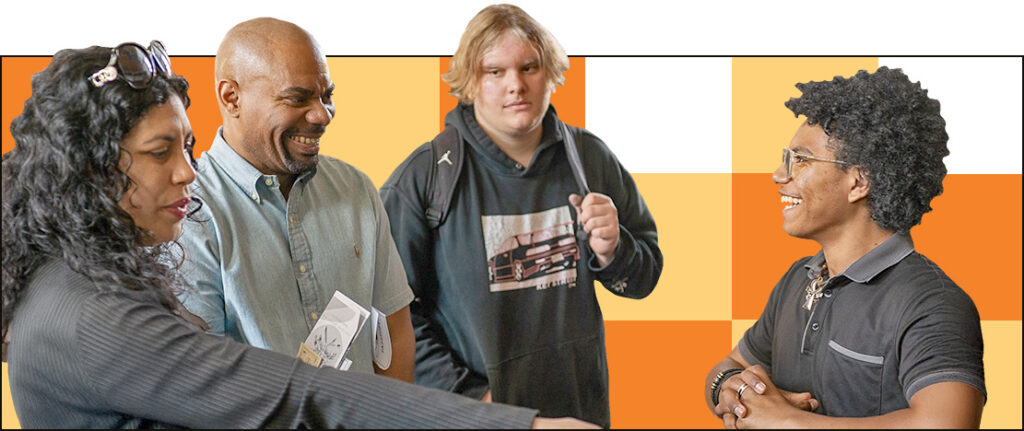


learn more about

learn more about

overview
partner with us
partner with us
events

events



learn more about

learn more about











In March 2022, Michelle Pledger published her first book, LIBERATE! Pocket-Sized Paradigms for Liberatory Learning. It is our great pleasure to share this excerpt with you.
To order a copy of the book, visit livingforliberation.com
I believe that most educators in most educational institutions want to do right by all young people. Yet we educators face competing commitments that monopolize our time, energy, and attention. Capacity building for any education initiative necessitates time, professional development, and coaching, but not all teachers have access to these resources, and definitely not in equal measure.
To address this, I wrote a (literally) pocket-sized compendium of practical resources to support your efforts in cultivating a decolonized, and subsequently liberated classroom.
Classrooms can be spaces of liberation for the young people we serve as well as for ourselves. In liberated education spaces, we can achieve freedom for self, others, systems and society. We have spent so much of our lives suffering from one form of oppression or another, so it is going to take time and intentionality to discover what it truly means to be personally free and professionally free. I say we, because liberation work is lifetime work and it is collective work. We must all actively liberate our thoughts and actions on a daily basis. And by doing our own liberation work, we will also create spaces that free young people from unnecessary limits on their thoughts and behavior in school.
This pocket guide consists of six areas you need to liberate: your consciousness, your classroom, your curriculum, your cognitive capacity bias, your communication, and your conduct constructs.
What follows is Part Four of the guide, “Liberate your Curriculum”:
curriculum: the subjects comprising a course of study in a school or college
What?
A liberated curriculum is a curriculum that represents, elevates, honors, and integrates all young peoples’ cultural and linguistic backgrounds and cultural ways of being. A liberated curriculum is not Eurocentric in nature, nor is it isolated in social science courses. Rather, it provides multiple and diverse perspectives in all subject areas, including math and science. A liberated and culturally responsive approach to content means that we analyze what content our students are learning before we concern ourselves with content mastery. We have to discern whether the content we teach is perpetuating an ethnocentric view of the content area, or if it integrates diverse authors, experts, and contributors. Emily Style said, “education needs to enable the student to look through window frames in order to see the realities of others and into mirrors in order to see her/his own reality reflected” (Style, 1988). To put it plainly, a balanced and liberated curriculum includes mirrors and windows. It also infuses joy throughout the learning journey.
Why?
The University of Wisconsin-Madison School of Education Cooperative Children’s Book Center’s 2018 Diversity in Children’s Books infographic is super telling. Animals still have more representation than all people of color combined!

Current education content features disproportionately low representation of LGBTQ+, neurodiverse, or emergent bilingual protagonists. These omissions occur from kindergarten to college in literary works as well as textbooks. Poet Adrienne Rich said, “When someone with the authority of a teacher describes the world and you’re not in it, there is a moment of psychic disequilibrium, as if you looked into a mirror and saw nothing.” When we make discretionary decisions about who and what to include in our curriculum, the choice is not neutral. It is often steeped in bias. We are deciding what content is worthy of mastery. We are deciding who and what is included or excluded. These decisions have the power to reveal narrow or expanded worldviews, to impede or empower, to damage or heal. There is deep psychological damage inflicted on young people who do not see themselves in the curriculum. While it may be tempting to believe this only applies to English Language Arts or Social Science courses, that is not the case. Diverse representation is essential and imperative in all subject areas-math and science especially given their disproportionate inclusion and representation of Black, Indigenous, Latinx, and women. And it can be achieved via direct instruction and collaborative learning.
When culturally and linguistically diverse (CLD) young people are continually confronted with content that does not include exemplars, historical figures, scientists, mathematicians, or models of excellence who look like them, or when representations of their cultural identity are overwhelmingly negative, it has harmful impacts on their self and cultural group perception (Pledger, 2018). At the same time, all young people enhance their understanding of others when content provides them with windows into the experiences of others. Exposure is an essential step toward the development of empathy, or the ability to understand and share the feelings of another. Content that elevates the cross-cultural triumphs and inequities faced by individuals genuinely merits mastery, as it impacts positive racial identity development and community compassion. How we create and deliver curriculum truly matters. Our curriculum can either transfer content from one repository to another or it can transform young people’s reflections about themselves, others, and the world around them.
How?
Resources